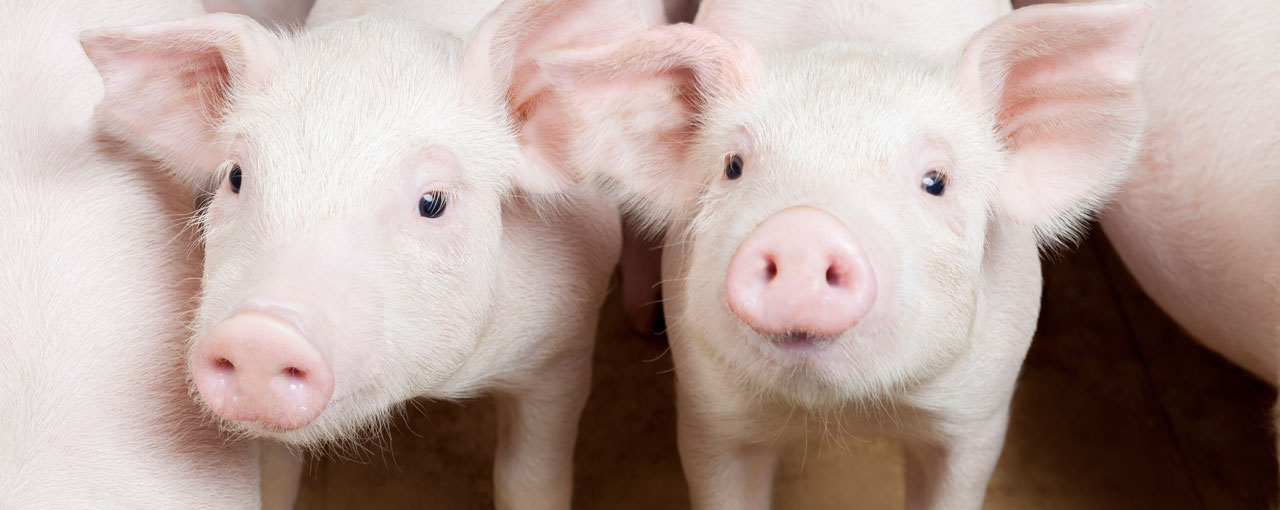Ascaridosis and trichurosis affect young pigs the most, while esophagostomosis affects the reproductive ability of sows.
Pigs become infected with Ascaris suum after ingesting invasive eggs from the external environment, from which larvae are released in the lumen of the cecum and proximal colon. Larvae penetrate through the intestinal wall into the blood and reach the liver after one to three days, where they form infiltrates - "milky spots" - on the third to seventh days after infection. On the sixth to eighth day, the larvae migrate through the lungs, where they cause damage, hemorrhage, emphysema and edema, infecting cells with other pathogens, particularly Mycoplasma. Moving through the respiratory tract, the larvae reach the pharynx and, after swallowing, return to the alimentary canal on the tenth day after infection. The final molting in small intestine occurs on the 24th day; mature adult helminths start excreting eggs during one year of life (females are capable of excreting more than 100,000 eggs per day).
Larval forms capable of infection develop in the environment (within 10 days in ideal conditions), but development may be delayed, and the pathogen remains a threat for up to 15 years.
Several species of Oesophagostomum spp. also reach pigs as invasive larvae. However, they penetrate the mucosa of the large intestine and molt in the submucosa to form fourth-stage larvae (reactive nodules in the tissues). After one to three weeks, the pathogens return to the lumen of the large intestine, where they undergo final molting and sexual maturation. Some fourth-stage larvae remain in the nodules for several months. In the external environment, first-stage larvae emerge in the testes after one or two days. Within a week, they molt twice, turning into invasive third-stage larvae that can survive for almost a year.
Pigs become infected with Trichuris suis by ingestion of eggs containing first-stage larvae. Once swallowed, they hatch, penetrate for further molting in the submucosal lining of the intestine. Over three molts, the adult stage develops - sexual reproduction occurs. Adult female trichuris lays eggs into the lumen of large intestines, which together with feces fall into the external environment and under favorable conditions become invasive after 38-43 days.
PigUA.info by agrotimes.ua



